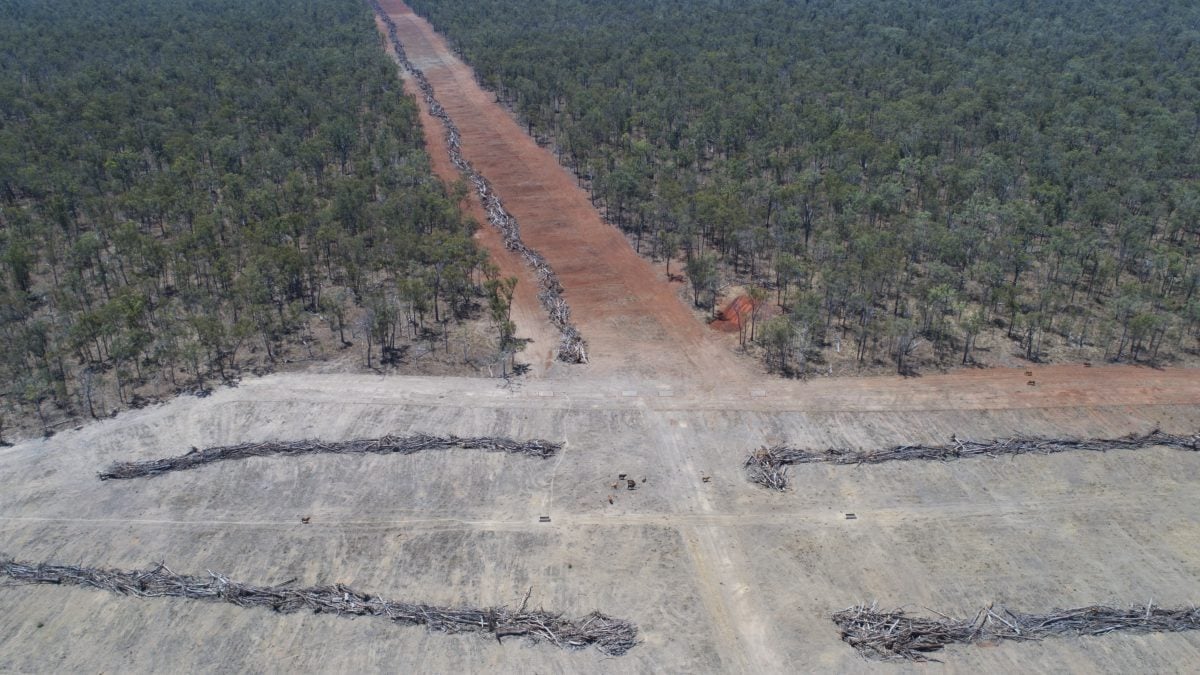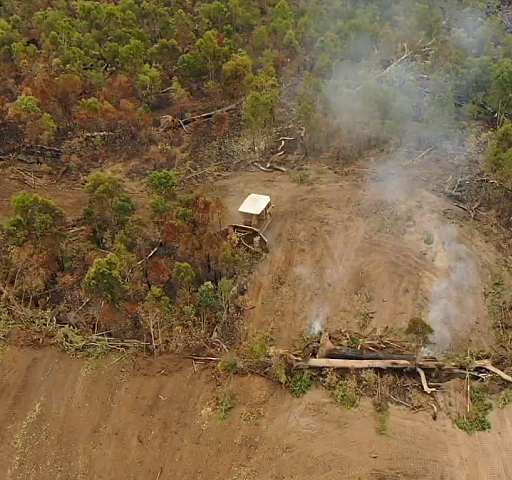Deforestation explained
Everything you need to know about the deforestation crisis taking place across Australia.

These stats show Australia's in the midst of a deforestation crisis that's affecting our wildlife, climate & future.
Australia is a hotspot for global deforestation. We're #1 in the world for mammal extinction, #2 for biodiversity loss. Even our iconic koalas are now endangered. These 10 facts prove Australia needs to take urgent action on deforestation NOW.
...and why we need new nature laws now.
References:
Calculations are based on 746,677 hectares of deforestation and land clearing in 2018-19 across Australia, 2,045 hectares per day, 85 hectares per hour, 1.42 hectares per minute. 1.42 hectares/60 seconds x 86 seconds = 2.03 hectares = close to the 2.02 hectare area of the MCG.
Over 7.7 million hectares of potential threatened species habitat has been destroyed since the operation of the EPBC Act (from 2000-2017). The size of Ireland (country) is 7.02 million hectares. Ward, M.S., Simmonds, J.S., Reside, A.E., et al. “Lots of loss with little scrutiny: The attrition of habitat critical for threatened species in Australia.” Conservation Science and Practice 1, no. 11 (2019).
Australian Bureau of Agriculture and Resource Economics (2012) Vegetation Assets, States and Transitions—2008 dataset. Accessed July 2017. In this report, intact refers to residual vegetation communications in the dataset; cleared refers to replaced and removed; and degraded refers to modified and transformed. Analysis of data by The Wilderness Society.
Pacheco, P., Mo, K., Dudley, N., Shapiro, A., Aguilar-Amuchastegui, N., Ling, P.Y., Anderson, C., & Marx, A., (2021). Deforestation Fronts: drivers and responses in a changing world. WWF. Retrieved From: https://wwf.panda.org/discover...
Analysis by the Wilderness Society of supplementary material provided with Tulloch A, et al (2015) Understanding the importance of small patches of habitat for conservation. Journal of Applied Ecology, 53(2): 418-429.
Woinarski J, et al (2015) Ongoing unraveling of a continental fauna: decline and extinction of Australian mammals since European settlement. Proceedings of the National Academy of Sciences, 112(5): 4531-4540. Additionally, as at 4/9/20, the IUCN Red List database contained 84 extinct mammals across the world. Of these, 25 were from Australia plus another 3 were from Christmas Island. This is the highest number of extinct mammals recorded in any country globally.
Australian Government (2021) EPBC Act List of threatened fauna. And Australian Government (2021) EPBC Act List of threatened flora.
According to the Queensland Government's own Species Technical Committee Report into the impact of land clearing on threatened species, “Habitat loss is the most serious threat to koalas in Queensland and New South Wales (Martin and Handasyde 1999).” The report states that clearing leads to many direct deaths whilst also exposing koalas to additional threatening processes through habitat fragmentation. Species Technical Committee and Laidlaw MJ (2017) Scientific review of the impacts of land clearing on threatened species in Queensland. Queensland Government, Brisbane.
The Wilderness Society (2019) Drivers of deforestation and land clearing in Queensland. See also Queensland Government SLATS report
The Wilderness Society (2022) Drivers of deforestation and land clearing in Queensland. See also Queensland Government SLATS report
The Wilderness Society (2017) Towards Zero Deforestation. https://www.wilderness.org.au//images/resources/Towards-Zero-Deforestation-Report.pdf
Additional references: State of the Environment report 2021, The Wilderness Society (2019) Australian beef and deforestation: Corporate scorecard

Everything you need to know about the deforestation crisis taking place across Australia.